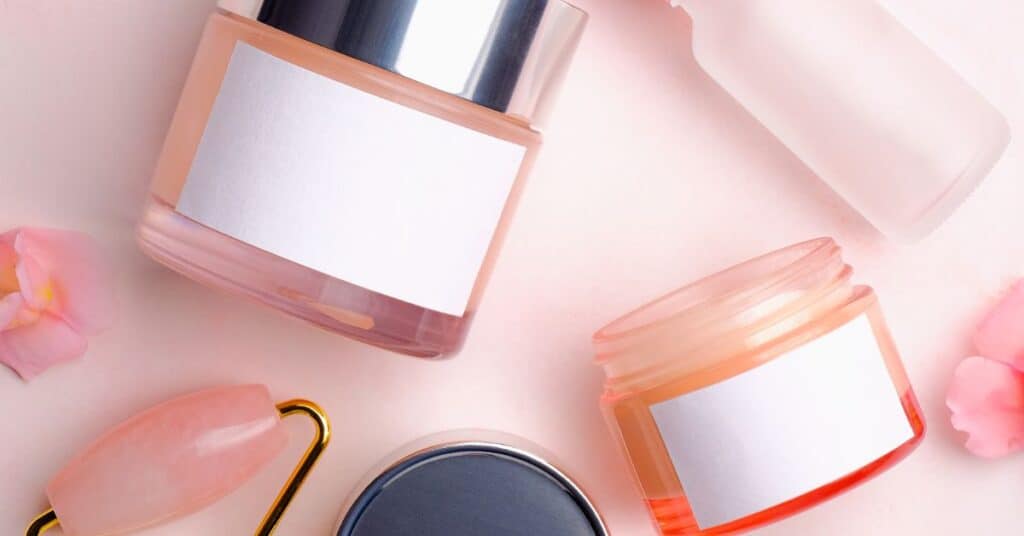Table of Contents
- What is a retinoid used for?
- What Is A Retinol?
- Which Is Better Retinol or Retinoid?
- What Are Retinoids Examples?
- What Type Of Retinol Is Best?
- Are There Side Effects To Retinol?
- Final thoughts
Are retinoids different from retinol? Yes, they are! There are tons of people who are just getting into the retinol space. It makes sense as people get older.
These two anti-aging ingredients aren’t entirely different. Retinol is a type of retinoid. But there are some subtle—but crucial—differences.
Both efficiently treat acne, repair fine lines and wrinkles, and enhance skin texture and tone.
If you’re going to use one thing, it should be some form of retinoid,” says Nazanin Saedi, MD, a board-certified dermatologist.
Let’s embark on a journey to demystify retinoids and retinol, explore their differences,
understand their applications and learn how to identify them.
What is a retinoid used for?
Retinoids are an umbrella name used to describe vitamin A and its derivatives.
They are a class of compounds that includes prescription-strength retinoids such as tretinoin (retinoic acid), adapalene (Differin), and retinol.
Retinoids can speed up the division and development of skin cells. In a nutshell, they alter the way your skin cells function.
The U.S. Food and Drug Administration approved Retinoic Acid (Tretinoin), a type of retinoid for treating acne, psoriasis, wrinkles, and other signs of aging 1971.
Retinoic acid (Tretinoin) is the active and potent form of vitamin A. It directly influences skin cells by binding to specific receptors.
For retinol to be biologically active, it must first be converted to retinaldehyde and then to retinoic acid. Only then can it be digested by the body (and skin).
Tretinoin (Retinoic Acid), Adapalen, and Isotretinoin are already in the form of retinoic acid and do not require this conversion.
Which is why it has a more irritating side effect and necessitates the prescription of a dermatologist.
What is a retinoid used for?
Retinoids are antioxidants with anti-wrinkle properties; they promote collagen formation beneath the skin, reducing wrinkles, photo-aging, and aging over time.
They are often available by prescription for people with multiple skin concerns.
Retinoids have proven to lighten dark spots and increase cell turnover, improving skin texture and tone. It is suitable for people aged 12 and up.
Some retinoids work to clear pores, which helps to treat acne. Others control skin cell development and reduce inflammation to treat psoriasis.
They can be classified into four types or generations.
First generation: tretinoin, retinaldehyde, retinol, isotretinoin, and alitretinoin.
Second generation: etrenitate and acitretin
Third generation: adapalene and tazarotene.
Fourth generation: trifarotene and seletinoid G
Adapalene is a popular acne treatment that can be obtained either via prescription or over-the-counter.
Topical formulations such as tretinoin, tazarotene, and trifarotene are also available as prescription medications for treating acne.
On the other hand, Isotretinoin is an oral medication that is only prescribed for severe acne cases.
Because our bodies cannot make retinoids, they must be taken orally or administered topically.
What Is A Retinol?
Retinol, on the other hand, is a subset of the retinoid family. It’s frequently found in anti-aging lotions and serums.
It’s often found in non-prescription skincare products. It is considered a milder form of vitamin A.
Retinol is less potent than prescription retinoids and takes longer to convert into retinoic acid, the active ingredient affecting skin cells.
Retinol needs to be converted twice by enzymes in our skin – first to retinaldehyde and then to retinoic acid – before the body and skin can use it.
This conversion process makes retinol a less potent ingredient than prescription retinoic acids.
However, that doesn’t mean that over-the-counter retinol is ineffective.
The gradual conversion of retinol into retinoic acid makes it more tolerable for individuals with sensitive skin.
When applied to the skin, retinol slowly converts to retinoic acid.
It gets delivered into the skin gradually instead of all at once, like Tretinoin retinoids.
As a result, retinol users tend to experience less skin irritation than those who use retinoids.
Retinol is absorbed into your skin cells when there is too much.
So if you apply too much more than your skin needs, your skin cells store it and save it for later.
When your retinol levels are low, they release it, and that’s one of the reasons retinol is said to help minimize irritation.
As opposed to something highly effective like tretinoin, isotretinoin, and Adapalene
Starter Retinol is going to have supporting ingredients that are going to be hydrating; they are going to be at lower concentrations, and they are not as irritating.
With time, you can use that particular product forever or scale up to something a little more effective.
Which Is Better Retinol or Retinoid?
So, which one is better for you? It depends on your skin type, concerns, and tolerance level.
If you have mild to moderate acne or signs of aging, start with an over-the-counter retinol product and see how your skin reacts.
Persons with severe acne or more advanced signs of aging and photoaging may need a prescription retinoid for the best results.
In either case, you should always use sunscreen during the day and moisturize your skin well to prevent damage and irritation.
Retinol is a good choice for individuals who want to incorporate vitamin A into their skincare routine for anti-aging or skin texture improvement but have more sensitive skin.
For those unfamiliar with retinoids, this can be a helpful entry point. I recommend a retinol gel or serum for dry skin.
A retinol lotion or moisturizer is best for those with oily skin, and a retinol serum or moisturizer is ideal for those with combination skin.
Retinol deactivates quickly if exposed to light.
Heat and light are both enemies of sensitive compounds like retinol.
The best retinol product will be in an airless container. This packaging keeps the product potent until the very last drop.
Prescription Retinoids (e.g., tretinoin, adapalene) are stronger and more effective at addressing concerns like acne, wrinkles, and hyperpigmentation.
And they are only available with a prescription from a doctor or dermatologist.
However, they can be more irritating and drying, so they may only be suitable for severe acne and advanced aging. Retinoids are suitable for ages 12 and older.
They have higher concentrations of retinoic acid and work faster and more effectively than retinol.
However, they also have a higher risk of causing side effects such as dryness, redness, peeling, and sensitivity.
Remember that your skin needs time to adjust to retinol or prescription retinoids, so starting with a lower concentration and gradually increasing usage is best.
What Are Retinoids Examples?
Retinol: Also known as vitamin A1, retinol is a natural form of vitamin A often used in over-the-counter (OTC) skincare products.
It is considered a milder retinoid and is effective for improving skin texture and decreasing dark spots, hyperpigmentation, and melasma.
Tretinoin (Retin-A): Tretinoin is a prescription retinoid used to treat acne and reduce the signs of aging.
It is more potent than retinol and can have a more significant impact on the skin.
Tretinoin can help unclog pores, improve skin cell turnover, and increase collagen production.
Adapalene (Differin): Adapalene is another prescription retinoid used primarily for treating acne.
It works by preventing the formation of acne lesions, reducing inflammation, and improving skin texture.
Retinoid esters: there are OTC products that are similar to retinol but have a different chemical structure.
They include retinyl palmitate, retinyl acetate, and retinyl linoleate. They are usually less irritating than retinol but also less effective.
Isotretinoin (Accutane): Isotretinoin is a powerful oral retinoid used to treat severe acne that has not responded to other treatments.
It can have significant side effects and requires close medical supervision due to its potential for adverse effects.
Tazarotene (Tazorac): Tazarotene is a prescription retinoid that is used to treat acne and psoriasis. It is more potent than retinol and adapalene and can improve skin tone and texture.
Retinaldehyde is an intermediate form of vitamin A that is occasionally found in cosmetic products. It is thought to be more potent than retinol but gentler than tretinoin.
Alitretinoin (Toctino): Alitretinoin is an oral retinoid used to treat severe chronic hand eczema in adults.
These are just a few examples of retinoids; other derivatives and formulations are available for various skin conditions.
What Type Of Retinol Is Best?
Consider product strength, type, and ingredients when choosing your product.
The specific skin concerns you want to address, such as acne, fine lines, or hyperpigmentation, can also influence your choice.
Stronger retinoids are typically more effective for deep wrinkles and acne, while milder forms can still benefit milder concerns.
Keep an eye out for substances that seem similar to retinol, such as “pro-retinol” or “retinyl propionate.”
They’re not as effective, so choose a gel if you have acne-prone skin (the drying quality minimizes breakouts) or a cream if you have normal or dry skin.
Most over-the-counter products offer retinol in the following concentrations: 1, 0.5, 0.3, and 0.25 percent. Start with a low concentration to see how your skin reacts.
Retinol (Pure Vitamin A): This is the standard form of retinol. It’s suitable for most skin types and helps with overall skin improvement, including fine lines, texture, and pigmentation.
Retinyl Palmitate: This milder form of retinol is often found in over-the-counter products and is gentle on sensitive skin. It’s best for those new to retinol.
Retinaldehyde: This is a more potent form of retinol but tends to be less irritating than pure retinol. It’s suitable for addressing deeper wrinkles and more advanced signs of aging.
Prescription Retinoids (Tretinoin): These are the strongest forms of retinol and are typically prescribed by a dermatologist. They are highly effective for treating severe acne, deep wrinkles, and sun damage but may have more side effects.
Are There Side Effects To Retinol?
Yes. Retinol can result in redness, burning, and scaling, according to the 2015 study.
That’s why most dermatologists recommend starting slow and then ramping up to daily use once the skin becomes used to it.
Combined with daily products, I suggest a more powerful spa treatment.
Spa treatments provide stronger anti-aging benefits that cannot be achieved with products alone.
Look for facials or treatments that target fine lines and deliver moisture to keep the skin healthy.
Retinoids increase your skin’s sensitivity. It’s best to stop using them for 5 to 7 days before waxes, peels, lasers, and other facial procedures.
Avoid using retinol during pregnancy. There’s a possibility that retinol and retinoid use can increase the risk of congenital disabilities.
Most doctors say pregnant women should avoid the ingredient during those nine months.
Retinol should not be combined with certain other active ingredients, as this can increase the risk of irritation.
Avoid using retinol with alpha-hydroxy acids (AHAs), beta-hydroxy acids (BHAs), or other potent exfoliants on the same day.
Always use a broad-spectrum sunscreen with SPF 30 or higher during the day when using retinol
Before using retinol all over your face, it’s a good practice to perform a patch test on a small area of skin to ensure you don’t have an adverse reaction
To minimize the irritating effect, put on a moisturizer before you go in with your retinol; it won’t interfere with absorption.
Final thoughts
Because retinoids can make skin more sensitive to the sun,
I advise using it only at night and always using sun protection during the day, which includes seeking shade, wearing sun-protective clothing, such as a wide-brimmed hat, and applying sunscreen to all skin not covered by clothing.
If you have sensitive skin, look for a physical sunscreen containing titanium dioxide or zinc oxide ingredients.
If you’re considering using a retinol product, talk to your dermatologist to see if it would be a good option for your skin.



